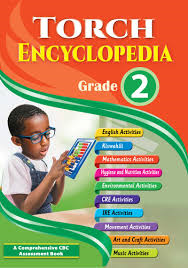Agriculture Paper 2 Exams and Marking Schemes Kassu Jet Exams
Name: ………………………………………….Index No: …………………….
443/2
AGRICULTURE
Paper 2
2 hours
KASSU EXAMINATION
Kenya Certificate of Secondary Education
AGRICULTURE
PAPER 2
2 HOURS
Instructions to candidates.
- Write your name and index number in the spaces provided.
- This paper consists of three sections A, B and
- Answer ALL the questions in section A and B and any two questions in section C.
- All answers must be written in the spaces provided.
- Do not remove any pages from the question paper.
For Examiner`s use only
| Section | Questions | Maximum score | Candidates score |
| A | 1-18 | 30 | |
| B | 19-22 | 20 | |
| C | 20 | ||
| 20 | |||
| Total Score | 90 |
SECTION A (30 marks)
Answer all questions in this section in the spaces provided
- Give two uses of the roof of cattle dip tank. (1mk)
……………………………………………………………………………………………………………………………………………………………………………………………………………………………………………………………………………………
- State two causes of soft shelled eggs. (1mk)
……………………………………………………………………………………………………………………………………………………………………………………………………………………………………………………………………………………
- Give four signs of farrowing in a sow. (2mks)
…………………………………………………………………………………………………………………………………………………………………………………………………………………………………………………………………………………………………………………………………………………………………………………………………………………………………………………………………………………………………………………………………………………………………………
- Outline four causes of cannibalism in a flock of layers in the deep system. (2mks)
………………………………………………………………………………………………………………………………………………………………………………………………………………………………………………………………………………………………………………………………………………………………………………………………………………………………………………………………………………………………………………………………………………………………………..
- State four maintenance practices carried out on a Jack plane. (2mks)
……………………………………………………………………………………………………………………………………………………………………………………………………………………………………………………………………………………………………………………………………………………………………………………………………………………………………………………………………………………………………………………………………………………………………….
- State three uses of solar power on the farm. (1½ mks)
………………………………………………………………………………………………………………………………………………………………………………………………………………………………………………………………………………………………………………………………………………………………………………………………………………………………
- Name four types of layer breeds of chicken. (2mks)
………………………………………………………………………………………………………………………………………………………………………………………………………………………………………………………………………………………………………………………………………………………………………………………………………………………………………………………………………………………………………………………………………………………………………..
- Give the distinguishing characteristics of Essex and Wessex Saddle back breed of pigs.(1mk)
…………………………………………………………………………………………………………………………………………………………………………………………………………………………………………………………………………………..
- Give four symptoms of brucellsis in cows. (2mks)
…………………………………………………………………………………………………………………………………………………………………………………………………………………………………………………………………………………………………………………………………………………………………………………………………………………………………………………………………………………………………………………………………………………………………………
- State four reasons why inbreeding may be useful in livestock production. (2mks)
……………………………………………………………………………………………………………………………………………………………………………………………………………………………………………………………………………………………………………………………………………………………………………………………………………………………………………………………………………………………………………………………………………………………………….
- Give two effects of Tsetse flies on livestock. (1mk)
……………………………………………………………………………………………………………………………………………………………………………………………………………………………………………………………………………………
- Name two types of rabbit houses. (1mk)
……………………………………………………………………………………………………………………………………………………………………………………………………………………………………………………………………………………
- List four types of vaccines used in livestock production. (2mks)
………………………………………………………………………………………………………………………………………………………………………………………………………………………………………………………………………………………………………………………………………………………………………………………………………………………………………………………………………………………………………………………………………………………………………..
- Name four types of pests that affect bees. (2mks)
………………………………………………………………………………………………………………………………………………………………………………………………………………………………………………………………………………………………………………………………………………………………………………………………………………………………………………………………………………………………………………………………………………………………………..
- Outline three reasons why farmers dehorn cattle. (11/2mks)
………………………………………………………………………………………………………………………………………………………………………………………………………………………………………………………………………………………………………………………………………………………………………………………………………………………………
- (a. Differentiate between cropping and harvesting as used in fish production. (1mk)
………………………………………………………………………………………………………………………………………………………………………………………………………………………………………………………………………………….
- Name two species of fresh warm water fish. (1mk)
…………………………………………………………………………………………………………………………………………………………………………………………………………………………………………………………………………………..
- Give four reasons for steaming up dairy cattle. (2mks)
……………………………………………………………………………………………………………………………………………………………………………………………………………………………………………………………………………………………………………………………………………………………………………………………………………………………………………………………………………………………………………………………………………………………………….
- List four post milking practices. (2mks)
………………………………………………………………………………………………………………………………………………………………………………………………………………………………………………………………………………………………………………………………………………………………………………………………………………………………………………………………………………………………………………………………………………………………………..
SECTION B (20 Marks)
Answer all questions in this section in the spaces provided.
- The diagram below shows the digestive system of a chicken. Study it and answer question that follow.
- . Identify the parts labeled L,M and N above. (2mks)
K………………………………………………………………………………………
L………………………………………………………………………………………
M………………………………………………………………………………………
N……………………………………………………………………………………….
- . Give the function of the part labeled M that makes it efficient in digesting food. (2mks)
………………………………………………………………………………………………………………………………………
(C) . Give two characteristics of the part labeled M that make it efficient in digesting food.(1mk)
……………………………………………………………………………………………………………………………………………………………………………………………………………………………………………………………………………………
- Study the illustration below showing an animal suffering from a disease. Study it and answer question that follow.
- . Identify the disease the animal is suffering from. (1mk)
………………………………………………………………………………………………………………………………………..
(b. What causes the disease shown above? (1mk)
…………………………………………………………………………………………………………………………………..
(c. Give three symptoms shown by a cow suffering from the disease above. (3mks
……………………………………………………………………………………………………………………………………………………………………………………………………………………………………………………………………………………………………………………………………………………………………………………………………………………………..
- Study the farm structure shown below and answer questions that follow.
- . Identify the structure shown above. (1mk)
……………………………………………………………………………………………………………………………………
(b) . Name the parts labeled I,J,K and L. above. (2mks)
I…………………………………………………………………………………………………
J………………………………………………………………………………………………….
K…………………………………………………………………………………………………
L………………………………………………………………………………………………….
(c ) . Give two disadvantages of using the structure above in pasture fields. (1mk)
……………………………………………………………………………………………………………………………………….
- The diagram below shows a stir up pump. Study it and answer questions that follow.
(a. Name the parts labeled A,B,C and D. (2mks)
A…………………………………………………………………………………………………..
B……………………………………………………………………………………………………
C…………………………………………………………………………………………………….
D…………………………………………………………………………………………………….
(b. State two maintenance practices that should be carried out on the equipment illustrate above (2mks)
……………………………………………………………………………………………………………………………………………………………………………………………………………………………………………………………………………………
(c. State one disadvantage of using the equipment above in controlling ticks. (1mk)
………………………………………………………………………………………………………………………………
SECTION C (20 Marks
Answer any TWO questions in this section in the spaces provided.
- (a) .Describe Newcastle disease under the following sub headings
- Causal organism (1mark)
………………………………………………………………………………………………..
- Symptoms (6marks)
………………………………………………………………………………………………………………………………………………………………………………………………………………………………………………………………………………………………………………………………………………………………………………………………………………………………………………………………………………………………………………………………………………………………………………………………………………………………………………
- Control measures (3marks)
………………………………………………………………………………………………………………………………………………………………………………………………………………………………………………………………………………………………………………………
(b) State and explain the requirements of a deep litter home in poultry (10marks)
………………………………………………………………………………………………………………………………………………………………………………………………………………………………………………………………………………………………………………………………………………………………………………………………………………………………………………………………………………………………………………………………………………………………………………………………………………………………………………………………………………………………………………………………………………………………………………………………………………………………………………………………………………………………………………………………………………………………………………………………………………………………………………………………………………………………………………………………………………………………………………………………………………………………………………………………………………………………
- (a) . Describe the procedure of training a calf to take milk from a bucket in artificial calf
Rearing. (5marks)
………………………………………………………………………………………………………………………………………………………………………………………………………………………………………………………………………………………………………………………………………………………………………………………………………………………………………………………………………………………………………………………………………………………………………………………………………………………………………………………………………………………………………………….
(b). Outline seven factors considered when selecting eggs for incubation. (7marks)
………………………………………………………………………………………………………………………………………………………………………………………………………………………………………………………………………………………………………………………………………………………………………………………………………………………………………………………………………………………………………………………………………………………………………………………………………………………………………………………………………………………………………………………………………………………………………………………………………………………………………………………………
(c ) Describe management practices that would ensure clean milk production in a dairy farm.
(8marks)
………………………………………………………………………………………………………………………………………………………………………………………………………………………………………………………………………………………………………………………………………………………………………………………………………………………………………………………………………………………………………………………………………………………………………………………………………………………………………………………………………………………………………………………………………………………………………………………………………………………………………………………………………………………………………………………………………………………………………………………………………………………………………………………………………………………………………………………………………………………………………………………………………………………………………………………………………………………………
- (a). Describe the symptoms of livestock infection in livestock (6marks)
………………………………………………………………………………………………………………………………………………………………………………………………………………………………………………………………………………………………………………………………………………………………………………………………………………………………………………………………………………………………………………………………………………………………………………………………………………………………………………………………………………………………………………………………………………………………………………………………………………………………………………………………
- Explain the rearing of chicks from 1 day old to 8 weeks old. (14 marks)
………………………………………………………………………………………………………………………………………………………………………………………………………………………………………………………………………………………………………………………………………………………………………………………………………………………………………………………………………………………………………………………………………………………………………………………………………………………………………………………………………………………………………………………………………………………………………………………………………………………………………………………………………………………………………………………………………………………………………………………………………………………………………………………………………………………………………………………………………………………………………………………………………………………………………………………………………………………………………………………………………………………………………………………………………………………………………………………………………………………………………………………………………………………………………………………………………………………………………………………………………………………………………………………………
MOKASA ONE JOINT EXAMINATION
AGRICULTURE PAPER 2
MARKING SCHEME
- Importance of good ventilation in animal houses.
(i) To have sufficient air circulation
(ii) To regulate humidity inside the house
(iii) To help regulate temperature inside the house
(2 x ½m = 1 mark)
- Factors that affect the digestibility of a feed.
(i) Chemical composition of the feed
(ii) Form in which the food is given/method of preparation
(iii) Species of the animal
(iv) The ratio of energy/carbohydrate to the proteins
(v) Feed mixtures and other ingredients in the feed
(vi) Quantity of feed already present in the digestive system of the animal
(4 x ½ = 2 marks)
- Signs that shows a rabbit doe is about to give birth
(i) Nest building
(ii) Plucking of fur from her abdomen
(iii) Restlessness
(iv) Large/congested udder
(v) Loss of appetite
- Meaning of the following terms
- a) Chick – Newly hatched bird from one day to eight weeks old (½ mark)
- b) Gilt – A young female pig from weaning to farrowing (½ mark)
- c) Heterosis – Increased ability and performance of the offsprings above the average of two of unrelated parents (½ mark)
- d) Kindling – Act of giving birth/parturition in rabbits. (½ mark)
- Maintenance measures for a cross-cut saw (2 marks)
(i) Clean after use
(ii) Set the teeth to the right angle
(iii) Sharpen the teeth if blunt
(iv) Replace broken handles
(v) Tighten loose screws (4 x ½ = 2 marks)
- Tools used for checking verticalness of a wall when laying bricks.
(i) Spirit level
(ii) Plumb bob/plumbline
(2 x ½m = 1 mark)
- Four reasons why a farmer should use concrete floors for dairy shed.
(i) Easy to clean
(ii) Long lasting
(iii) Do not encourage foot rot
(iv) Aid in controlling parasites
(v) Help to prevent waterlogging
(vi) Allow easy drainage of urine
(4 x ½m = 2 marks)
- Origin of the following breeds;
(i) Charolais – France (½ mark)
(ii) Toggenburg – Switzerland (½ mark)
(iii) Merino – Spain (½ mark)
(iv) Landrace – Denmark (½ mark)
- Four ways in which diseases can spread
(i) Through vectors
(ii) Through eating contaminated food
(iii) Through breeding/mating
(iv) Through breathing in contaminated air
(v) Through surgical instruments
(vi) Through sucking of young ones
(4 x ½m = 2 marks)
- Limitation of artificial insemination in cattle breeding (2 marks)
(i) Harmful traits/diseases can be spread faster
(ii) It requires trained personnel
(iii) There are low chances of conceptions due to death of sperm
(iv) Requires more labour than natural mating
(4 x ½m = 2 marks)
- Functions of carbohydrates in the body of an animal.
(i) Supply of energy to carry out body processes
(ii) Provide raw materials for the synthesis of animal products such as milk, meat and eggs.
(iii) They aid in peristalsis
(iv) Excess carbohydrates are converted to fat and stored under the skin providing insulation to the body.
(4 x ½m = 2 marks)
- Forms of which tapeworms are found in livestock (1 mark)
(i) Embryo/infective egg
(ii) Cysts/bladderworms/cysticercus/larva
(2 x ½m = 1 mark)
- Routine livestock rearing practices used to control parasites and diseases.
(i) Vaccination
(ii) Deworming
(iii) Hoof trimming
(iv) Docking
(v) Dipping/spraying
(vi) Dusting
(4 x ½m = 2 marks)
- Factors that influence the quality of honey
(i) Presence of impurities/foreign materials
(ii) Source of nectar/type of flower
(iii) The stage of ripening/maturity
(iv) The method of extraction/honey harvesting
(v) Season of the year
(vi) Rate of smoking
(4 x ½m = 2 marks)
- Four ways in which animal utilizes a production ration. (2 marks)
(i) For synthesis of products such as milk and meat/for fattening
(ii) For reproduction/foetal development/mating
(iii) For growth in young animals
(iv) For daily work/activities like ploughing and pulling carts
(4 x ½m = 2 marks)
- Four reasons for treating timber
(i) Prevent attack from insects
(ii) Prevent attack from fungi/rotting
(iii) To resist weather conditions e.g. extreme temperature
(iv) To resist water penetration
(v) To harden the wood/make it durable/increase strength
SECTION B: (20 marks)
- a) Identify the equipment
Milk can/milk churn
- b) State the use of the equipment
Keeping milk/carrying milk
- c) State three methods that can be use to sterilize the equipment
(i) Using sunlight
(ii) Steam the equipment/use hot water treatment
(iii) Use chemical sterilizers e.g biocide.
- sorghum 12% 7 parts sorghum √
Soya bean 37 18 parts soya bean √
25 parts √
Sorghum = 7 x 100kg = 28kg√
25
Soya beans = 18 x 100kg = 72kg √
25 (5 marks)
- a) F – cervix (1 mark)
H – Oviduct/fallopian tube
- b) (i) Produce ova/ female gametes
(ii) Produce hormones that control ovulation and pregnancy.
- a) Identify the practice being carried out.
Spraying/tick control
- b) Name the structure in which the practice is being carried out.
Spray race.
- c) Give three advantages of the structure above over a plunge dip
– Suitable for pregnant and sick animals as they do not get shock.
– It is economical-the acaricide wash is not wasted since it is re-cycled in the process. It also requires a small amount of acaricide wash.
– Animals cannot swallow the acaricide wash ie no poisoning of animals.
– Spraying is faster ie can spray more animals per hour than a plunge dip since animals walk through the spray race.
– Less labour is required
– Small stock eg sheep can easily be sprayed.




